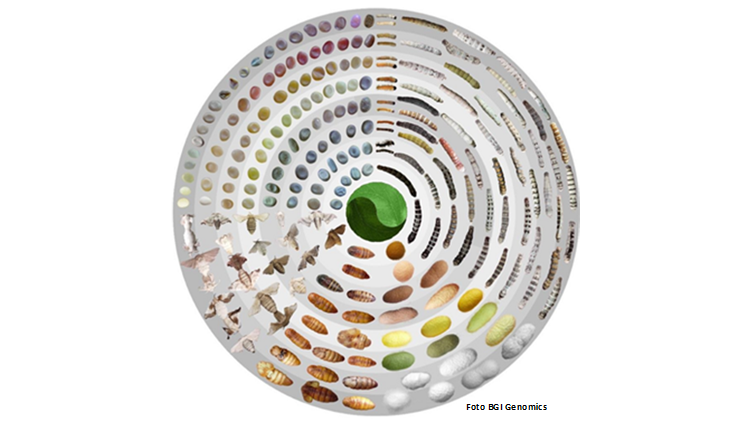Silk – Ancient fibre, material of the future
Silk – Ancient fibre, material of the future
A digital silkworm
Cosetex Silk, the material of the future
Natural silk fibre, is one of the the oldest natural fibres used by man. .Sources and discoveries date its use as early as 6000 years BC.
Natural silk fibre is the innovative material of the future , an exceptional research and innovation laboratory, a field of development and study capable of achieving exceptional results, a field of analysis for new discoveries to be expanded in other markets and sectors.
The digital silkworm
The Chinese biotech company BGI Genomics, , in collaboration with the Southwest University, the State Key Laboratory of Silkworm Genome Biology, has for the first and most complete time, defined the pangenoma of the domestic and wild silkworm. The first digital silkworm to contain almost the entire genetic heritage of the silkworm.The pangenoma represents theevolution of the Genome, a catalogue of the various DNA sequences capable of capturing genetic diversity as much as possible: the first encyclopedia of the genetic difference of a living being.
Through the study and the sequence of 1078 types of silkworms, (205 Bombyx Mory strains, 194 modified varieties and 632 genetic strains, 47 wild Bombyx Mandarina strains), 55 TERAs of data were collected that allowed the realisation of the largest and most complete long-read pangenoma relative to plants and animals.
This amount of data within the history of silkworm confirmed how the current Bombyx Mory, represent the evolution and domestication domestication of wild Bombyx Mandarin and will make it possible to highlight the characteristics of individual genes. To date, 468 (264 identified) genes associated with domestication and 198 (185 identified) genes associated with improvement have been highlighted
STRENGHTS AND INNOVATIONS
- First process of its kind that will be a preparation and example for studies on other animals and plants;
- Impressed amounts of data collected;
- Ability to digitally reconstruct the history of the silkworm, , its original strains, the changes that have occurred and the development in geographical terms over the centuries;
- Improvement of some some critical and qualitative aspects.
Here are two examples:
- identification of the BmChit β-GlcNAcase gene, whichcontrols the fineness of the silk fibre to obtain a fairly fine fibre in the future depending on the end uses;
- identification of a gene similar to BmTret1 that influences the embryo pause gene that could ensure insects’ survival levels and yields significantly higher in unfavourable environments.
A NEW GENERATION OF SILK – MATERIAL OF THE FUTURE
- Silk that can be adapted to market demands (in terms of quality, micro-fineness, regularity, colours, chemical and physical mechanical characteristics)
- Silk that can be adapted to different climatic and farming conditions, expanding the countries and climates where it can be produced, increasing yields and productivity. . All while maintaining those exclusive standards typical of Silk of naturalness, sustainability, circularity and agroecology maintenance of the territory and fight against microplastic pollution and reducing greenhouse gases.
“A SILK MORE AND MORE MATERIAL OF THE FUTURE “

